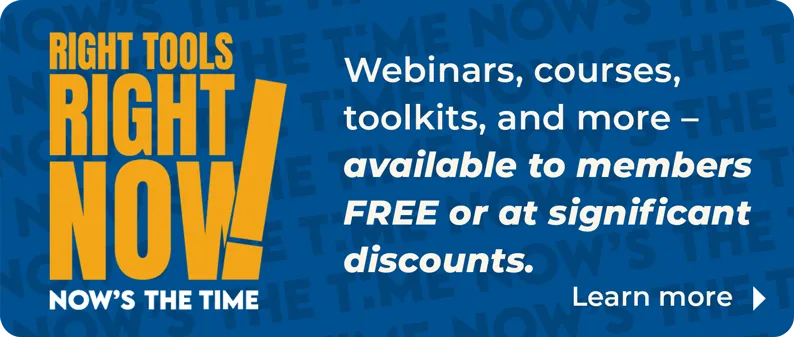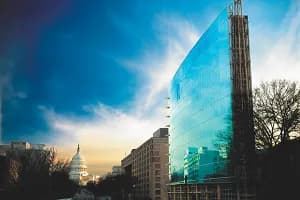Your commercial real estate business may be thriving because you’ve tapped into opportunities arising from market changes, or you may be contemplating how to counter a market slowdown. Either way, the COVID-19 environment presents unique budgeting challenges for 2021.
Because budgeting is typically a mundane process, it’s tempting to add 5% to last year’s budget and be done with it. This is not recommended in an ordinary year, and 2020 was far from ordinary. Even if you’ve already accounted for the impact of COVID-19 on your operations, it’s worth another look. Your ability to anticipate and plan for big unknowns is critical to business success. Let’s start with three assumptions.
- Some market sectors will continue to suffer in 2021, while others are poised for growth.
- The needs and use of “people space” in a work environment are changing.
- Efficiencies, productivity, synergies, and culture may suffer from a remote workforce.
Consider the impact of these assumptions on your situation and market, then determine how to counter or leverage that impact. What follows are some factors to consider and how they might affect costs or revenues.
Fewer Deals, Higher Conversion Rates
Firms specializing in hotel and retail are among the hardest hit, along with office leasing, which is experiencing a large-scale slowdown. Alternatively, multifamily, warehousing, and logistics are doing quite well. While your pipeline may be smaller than last year, opportunities exist in every sector. Tenants looking for space in today’s market are serious. The result is higher conversion rates, even with fewer transactions. When you project revenue, factor in an obvious hit to your pipeline, but look for new opportunities.
Fewer deals can mean more time to creatively market properties. Shuttered restaurants can be ideal spaces for small office operations, which are increasingly in demand as companies shun large office towers where they can’t control ventilation systems and common spaces. Finding new uses for old spaces may require developing new business networks or expanding your services. Plan for associated costs, such as membership in niche sector organizations, expanded architecture, or engineering support to prepare marketing proposals that reflect out-of-the-box thinking.
Limitations on traditional building tours make budgeting for high-grade virtual tours a must for 2021. Whether you contract with a service or buy a camera and go the DIY route, expect your costs to be higher than brochure production. We typically spend less than $200 on a basic flyer; contracting a basic 360 virtual tour costs us $750-$850. While a virtual tour may not be ideal for assessing clients’ needs and proposing solutions, assume your competitors are using this technology and plan for the investment.
Short-Term Leases: Here to Stay
You can drive new business in 2021 by responding to clients’ needs for flexibility—especially with leases. Companies are understandably hesitant to sign long-term leases. Accommodating shorter leases may seem like a hit to your P&L statement (don’t count on the normal short-term lease premium), but renewing a lease every one to three years (versus five or 10) can mean increased fees. Further, in exchange for lease-term flexibility, clients understand or can be educated that tenant improvement funds and periods of free rent are reduced, making short-term leases more acceptable to landlords.
Changing Uses of Space
While most companies won’t maintain an entirely remote workforce over the long term, buyers and tenants now look at their space needs differently. Companies that previously wanted 30,000 square feet in one location may now want three 10,000-square-foot locations to better control the number of people in the space and the associated systems and amenities, such as HVAC and high-touch elevators.
Open floor plans jammed with workers will disappear. The average square footage per U.S. office worker had been declining since 1990 from about 260 square feet per employee to 214 in 2019, according to data from commercial real estate firm CoStar. Expect that number to increase, but don’t equate more space per employee with larger spaces. Rather, many employers plan to continue work-at-home policies after the pandemic. Others are rotating groups of workers in the office on alternating days.
While the tenant generally bears the cost for workspace changes, property managers may benefit by providing additional services related to the sanitization and redesign of the space, especially for tenants nearing the end of a lease. A small investment now can save lost income from tenants lured away by offers of a “safer” environment.
Support Employee Well-Being
Budgeting for agent and employee well-being, especially for those who work remotely, is essential for 2021. First, consider whether the technology used by remote workers supports efficient work processes and effective communications with one another and clients. If not, you may need to upgrade software (high-speed Wi-Fi, premium level access to tools, cybersecurity) and hardware (new laptops, high-quality microphones, dual monitors). By now, you’ve identified automation needed to remotely manage operations. While you may be over that initial hump, consider how advanced technologies can enhance efficiency, help identify risks, and drive growth. New tools may help you reduce administrative staff or reallocate their time to revenue-producing activities.
In addition, keep in mind the emotional health of remote workers. The inability to bring everyone together, whether for business or social events, can compromise the work culture and overall productivity. Consider expanding mental health services as part of your overall benefits offering, and be sure eligible plan participants are aware of this benefit. Plan regular activities to keep the culture alive and thriving in the absence of daily face-to-face interaction. This is especially important as you add new team members. Such activities carry hard costs, and earmarking funds will help ensure follow-through. The well-being of your individual team members directly equates to the well-being of your organization, so this is no place to be stingy.
Budget for Success
Budgeting with so many unknowns is a challenge. Expect more surprises in 2021. Whatever your “miscellaneous” line item was last year, double it. Address known cost increases and diminishing pipelines, but account for new market opportunities. Prepare to take advantage of these opportunities by budgeting funds to support a business refocus and innovative marketing activities, and position your team for high productivity by maintaining a healthy culture that embraces employee well-being.









